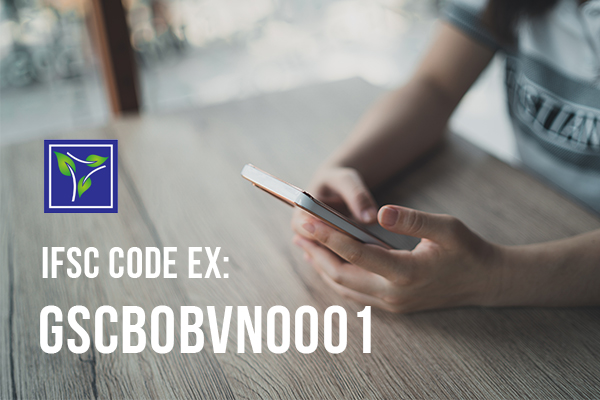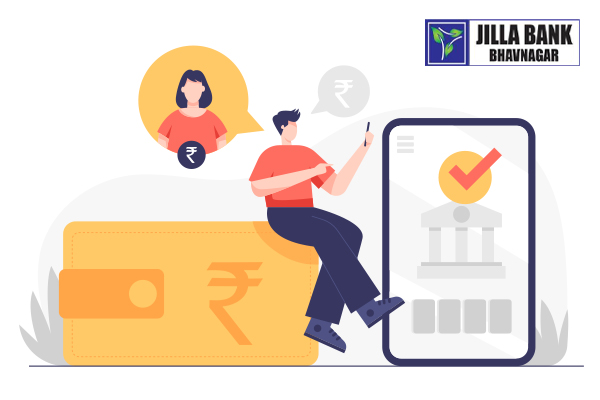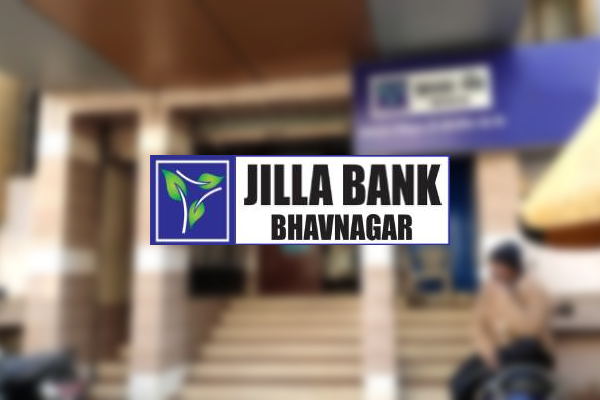 Bhavnagar District Co Operative Bank IFSC Code and MICR Code
Bhavnagar District Co Operative Bank IFSC Code and MICR Code
Find Bhavnagar District Co Operative Bank IFSC Code, MICR Code and branch details for NEFT, RTGS & IMPS transactions.
 Bhavnagar District Co Operative Bank IFSC Code and MICR Code
Bhavnagar District Co Operative Bank IFSC Code and MICR CodeFind Bhavnagar District Co Operative Bank IFSC Code, MICR Code and branch details for NEFT, RTGS & IMPS transactions.
 Bhavnagar District Co Operative Bank IFSC Code Finder - Select Your State
Bhavnagar District Co Operative Bank IFSC Code Finder - Select Your StateBhavnagar District Co Operative Bank is an integral part of the Gujarat banking system. It provides financial services to agricultural and undeveloped communities in the state. You can use the Bhavnagar District Co Operative Bank IFSC Code for online fund transfers to accounts with the bank.
After the Saurashtra State Cooperative Bank and the Gohilvad District Cooperative Bank merged, Bhavnagar District Cooperative Bank was formed. It currently has 90 branches in Gujarat, with the headquarters near Gangajaliya Talav, Bhavnagar.
The Indian banking system uses distinctive codes like the IFSC and MICR codes to verify the bank branch and clear online money transfers. The codes are allotted to each bank branch in the country by the Reserve Bank of India (RBI).
In this article, we'll discuss the importance of IFSC and MICR codes and learn ways to find the codes online and offline. We will also read more about domestic payment methods like NEFT, RTGS, and IMPS that facilitate the transfer of funds online from one bank account to another.

The Indian Financial System Code (IFSC) is a unique 11-character code allotted to every bank branch in India. The code consists of alphabets and numbers and is divided into three parts. The first part (with our characters) is the bank code. The second part is zero. The third part is the branch code.
For Instance, The Bhavnagar District Co Operative Bank, Bhav Road Botad Branch IFSC Code is GSCB0BVN001.
In the above IFSC code,
The branch code (last six characters) can be numbers, alphabets, or a combination of both. The fifth character in the IFSC code is always zero (0). The IFSC code is necessary to complete the wire transfer of funds between two bank accounts.
The IFSC code eliminates discrepancies in online money transfers by verifying the bank branch's information. Using an incorrect IFSC code will have varying results. If both accounts belong to the same branch, the transaction may still be successful. Otherwise, it will fail.
However, if the IFSC code and the beneficiary account number are wrong, the money might be credited to another person's account. If the transaction fails, the money will be deposited back into your account in a few working days. Now you see why it is important to find out the correct IFSC code and use it for NEFT, RTGS, and IMPS transactions.
Magnetic Ink Character Recognition (MICR) code features a 9-digit unique code printed on cheques using MICR technology. The code allows banks to verify the authenticity of the cheque during ECS (Electronic Clearing System) and deposit the amount to the beneficiary's account.
The MICR code makes cheque clearing faster and simpler. However, it is different from the Bhavnagar District Co Operative Bank IFSC Code and is not used by customers/account holders. There is no need to mention the code anywhere during online fund transfers.
The Bhavnagar District Co Operative Bank MICR code is 364801001 for the branch at Sahkar Bhavan, Bhavnagar. The MICR code is categorized into three parts:
The RBI also allots the MICR code. That said, some banks have non-MICR branches and process the cheques manually. Such transactions take longer to complete. Beneficiaries may have to wait a week or more before their account is credited.

It's time to find out where and how you can get the IFSC codes for NEFT, RTGS, and IMPS payments. There are online and offline methods to find the codes. You can use any of the below methods to access the IFSC and MICR codes.
Suppose you want the Bhavnagar District Co Operative Bank IFSC Code to send money to a beneficiary. In that case, you can search for it online or ask the beneficiary to send you the details. Let's look at each method in detail.
An easy and effective way to find the IFSC code of any bank is to search online. Websites like Find Your Bank has an extensive collection of banks and the details about their branches. Here's how to do it.
Go to the website: https://findyourbank.in/. Then, Fill out the form on the home page using the drop-down list.
Note that the page will automatically reload after each selection. Once you provide all the input details, the page will display the information about the bank branch. You can get the IFSC, MICR, and SWIFT (if applicable) codes along with other branch details.
Find Your Bank is also available as a free app for smartphones and can be downloaded from the Play Store. Whenever you need to check your bank codes, use the app.
Account holders have to request a chequebook after opening an account with the bank. The first page of the chequebook contains the IFSC and MICR codes of the branch. The codes are also printed on every cheque. The MICR code appears at the bottom, beside the cheque number. The IFSC code is printed at the top of the cheque.
Every account holder has a passbook to record the transactions and stay up to date with the balance information. On the first page of the passbook is the following information:
The digital platforms include the bank's official website and mobile banking app. You can find details about the bank's branches, contact information, and IFSC codes by visiting the bank's main website.
Calling the bank's customer care is another easy way to find the IFSC code. Anyone can call the bank and ask for the IFSC code of a branch. There is no need to share any confidential information (like account details, debit card numbers, etc.).

Sending money online is convenient and stress-free. You can use online fund transfer methods like NEFT, RTGS, and IMPS to send money from your bank account to another anywhere in the country. Let's read more about the three payment methods and the details necessary to initiate the transactions.
National Electronic Fund Transfer is the most widely used online money transferring method in India. NEFT relies on the DNS system (Deferred Net Settlement), which clears the transactions once every two hours in batches.
An NEFT payment you made may take around two hours to be credited to the beneficiary's account. NEFT is a full-time service and can be used 24*7*365 for your net banking account, mobile banking app, or by visiting the branch.
You need the Bhavnagar District Co Operative Bank IFSC Code to send money to an account in that bank. The following details are essential for an NEFT payment:
There are no minimum or maximum limits for NEFT transactions. That said, the service charges are levied based on the amount sent per transaction. These charges range between Rs. 2.50 + tax and Rs. 25 + tax (or more). Banks cannot charge more than the upper limit fixed by the RBI.
Real-Time Gross Settlement is used to transfer high-value funds in real-time. The payment method is secure and irreversible. It is used to send huge amounts of money online and for emergencies. The amount is credited instantly to the beneficiary's account.
RTGS has a lower limit of Rs. 2,00,000/- but no upper limit. This keeps the network free to facilitate large transactions seamlessly. RTGS is an expensive fund transfer method but useful for certain transactions.
RTGS transactions between Rs. 2,00,000 and Rs. 5,00,000 have a service charge of Rs. 25 + tax. Transactions of amounts above Rs. 5,00,000 have a service charge of Rs. 49 + tax. RTGS payments can be sent from the bank, mobile banking app, and net banking platforms.
You need the same details for NEFT and RTGS payments. The IFSC code is a must for every transaction.
Immediate Payment Service, as the name goes, is an instant payment service introduced in 2010. The payment method can be used anytime and any day to send money immediately to another person within the country.
IMPS requires your registered mobile number and Mobile Money Identifier (MMID) provided by the bank to customers who apply for it. This allows the system to send money using either the IFSC code or the mobile number.
This payment method can be used through net banking, mobile banking, bank branch, SMS, or ATMs. The minimum limit is Re. 1, and the maximum limit is Rs. 2,00,000. The transaction charges change from one bank to another. However, the upper limit for the charge is Rs. 25 + tax.
You require the below details to initiate an IMPS transaction:

The Gohilvad District Co-Operative Bank was established in 1948, a year after Bhavnagar was merged into Saurashtra state. The Saurashtra State Cooperative Bank was set up in 1954 and merged with the Gohilvad District Co-Operative Bank. It had 14 branches in Saurashtra state.
The bank became Bhavnagar District Co Operative Bank in 1959 and had been offering financial services to underdeveloped and poor cooperative societies, villages, and people.
Bhavnagar District Co Operative Bank was affiliated with 1391 societies (626 agricultural and 800 non-agricultural) by 2015. The bank has ninety branches scattered in villages and small towns across Gujarat. The headquarters are located in Bhavnagar.
Keshubhai H. Nakrani is the Chairman of Bhavnagar District Co Operative Bank, and Mansangbhai D Nakum is the Vice-Chairman.
You can call the below numbers to find the balance in your Bhavnagar District Co Operative Bank account. The bank also offers SMS and mobile banking services. Customer Care: (0278) 2423325 / 2426520 / 2511324
Yes. Bhavnagar District Co Operative Bank offers mobile banking services to its customers. You can check your balance amount, access mini statements, make NEFT, IFT, and IMPS payments, and manage your bank account through mobile banking services. Account-holders should register their mobile number with the bank and apply for mobile banking services.
Gujarat has around 530 cooperative bank branches. Ahmedabad has the highest number of branches (100), followed by Surat with 85 branches and Vadodara with 70 cooperative bank branches.